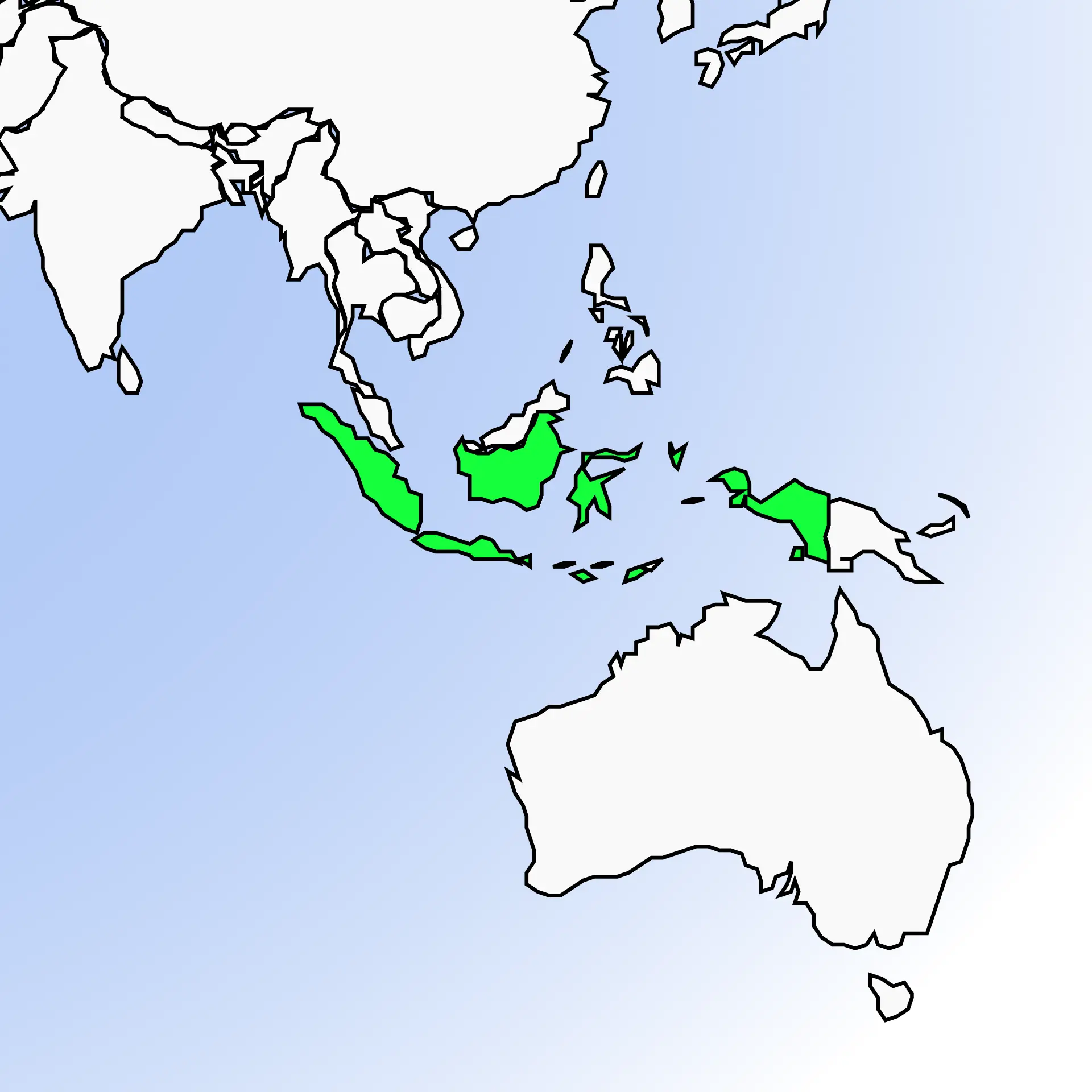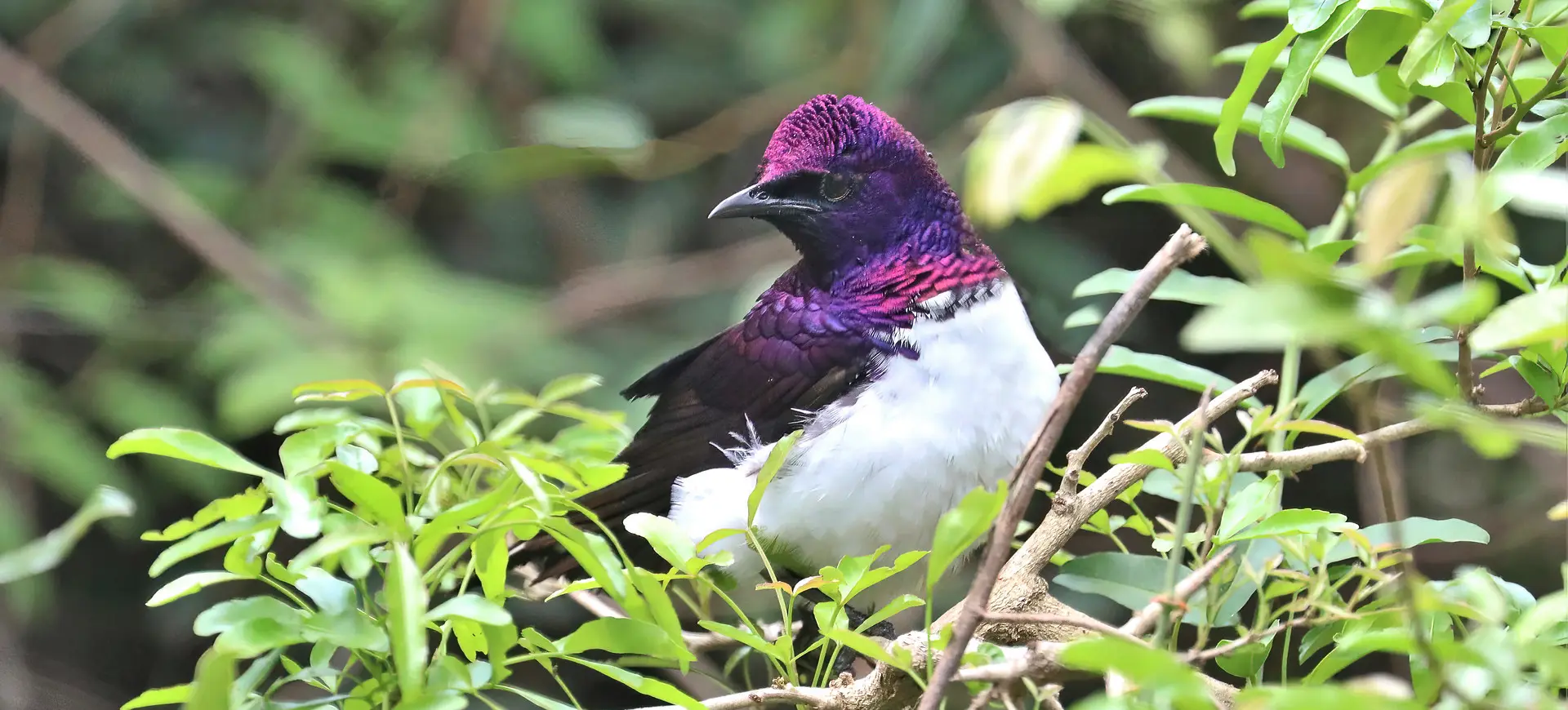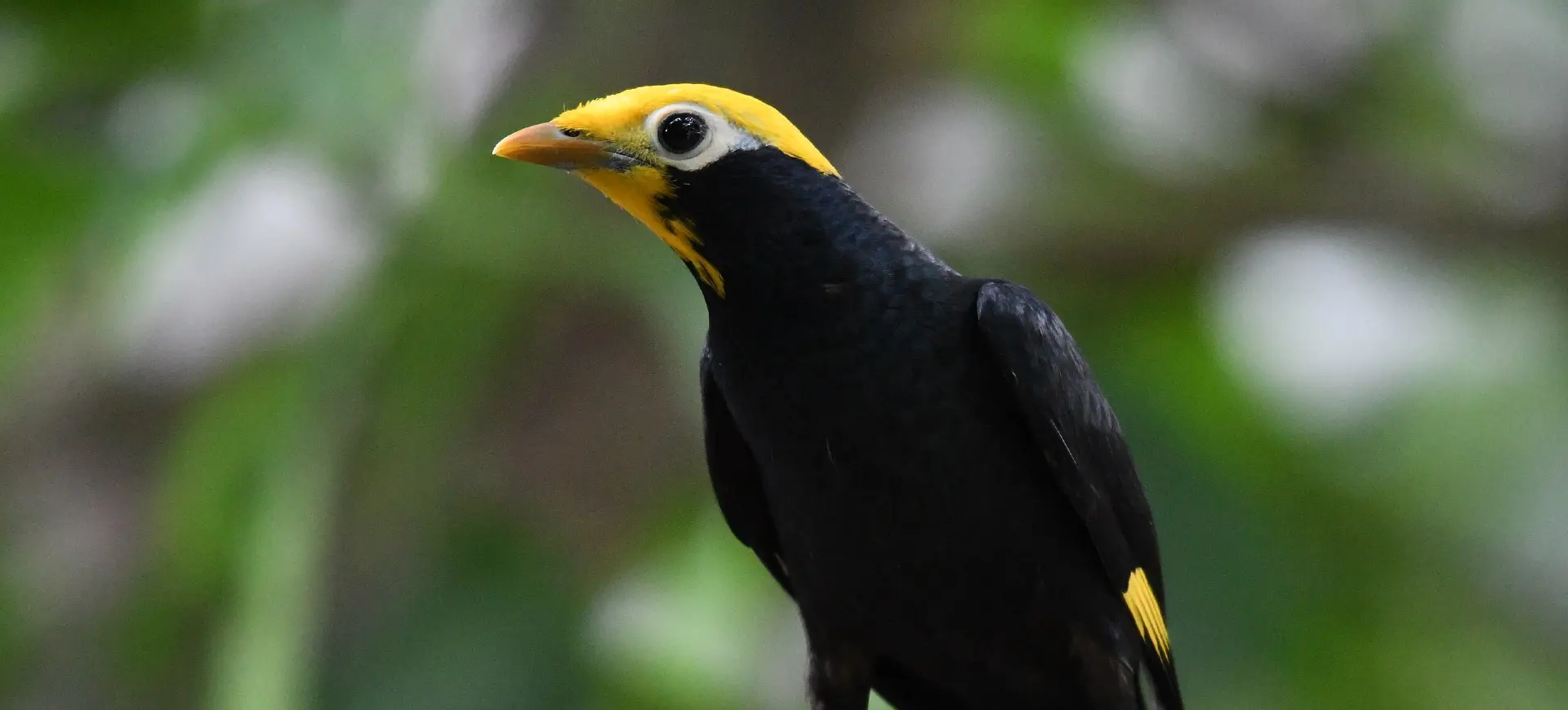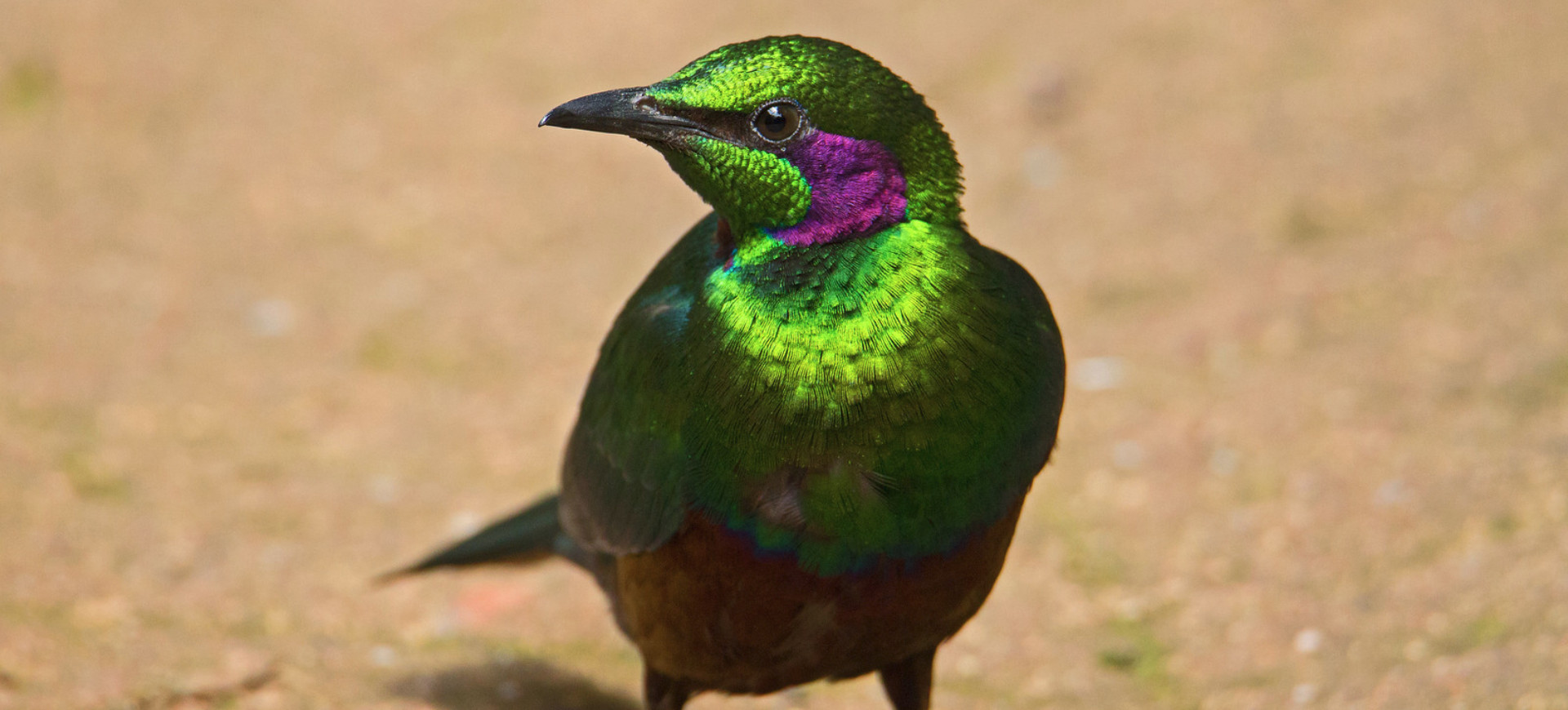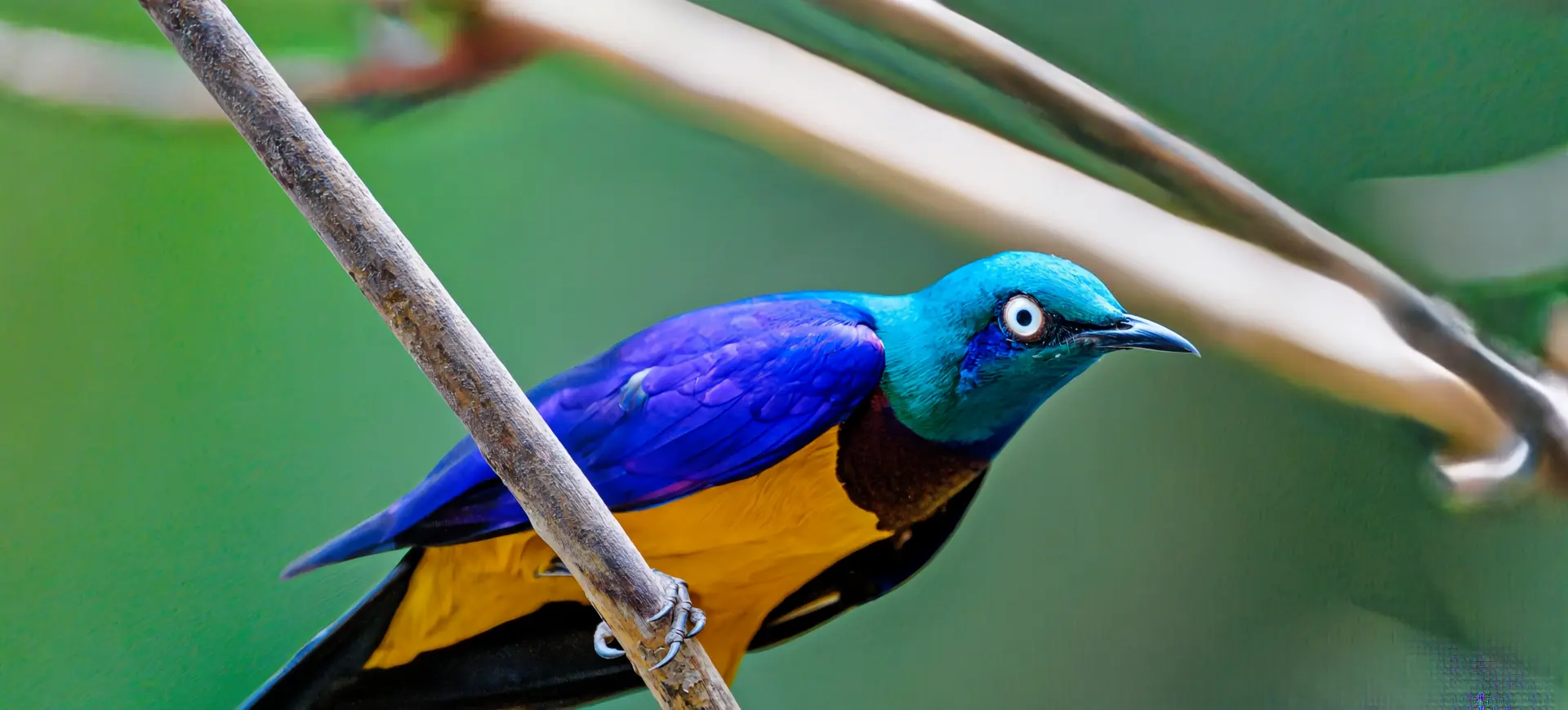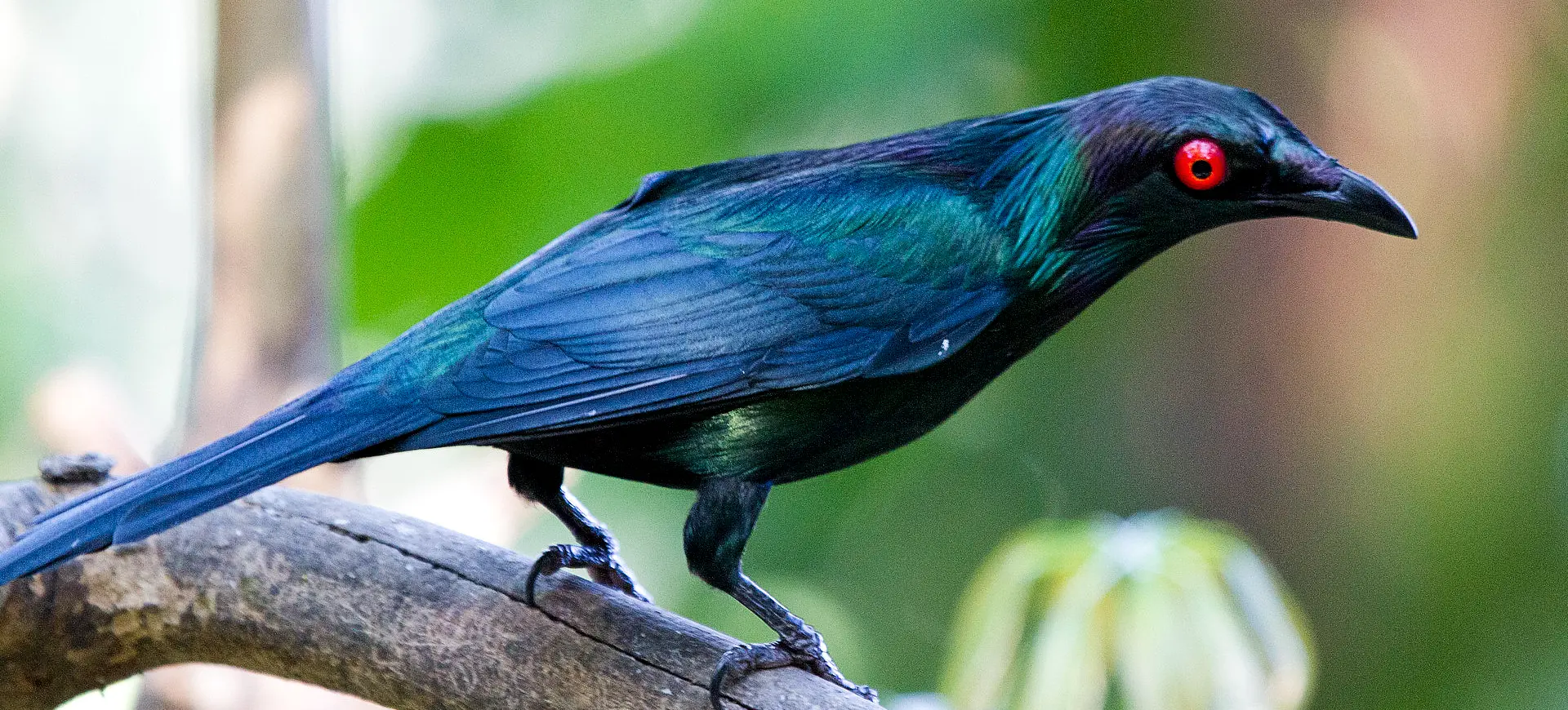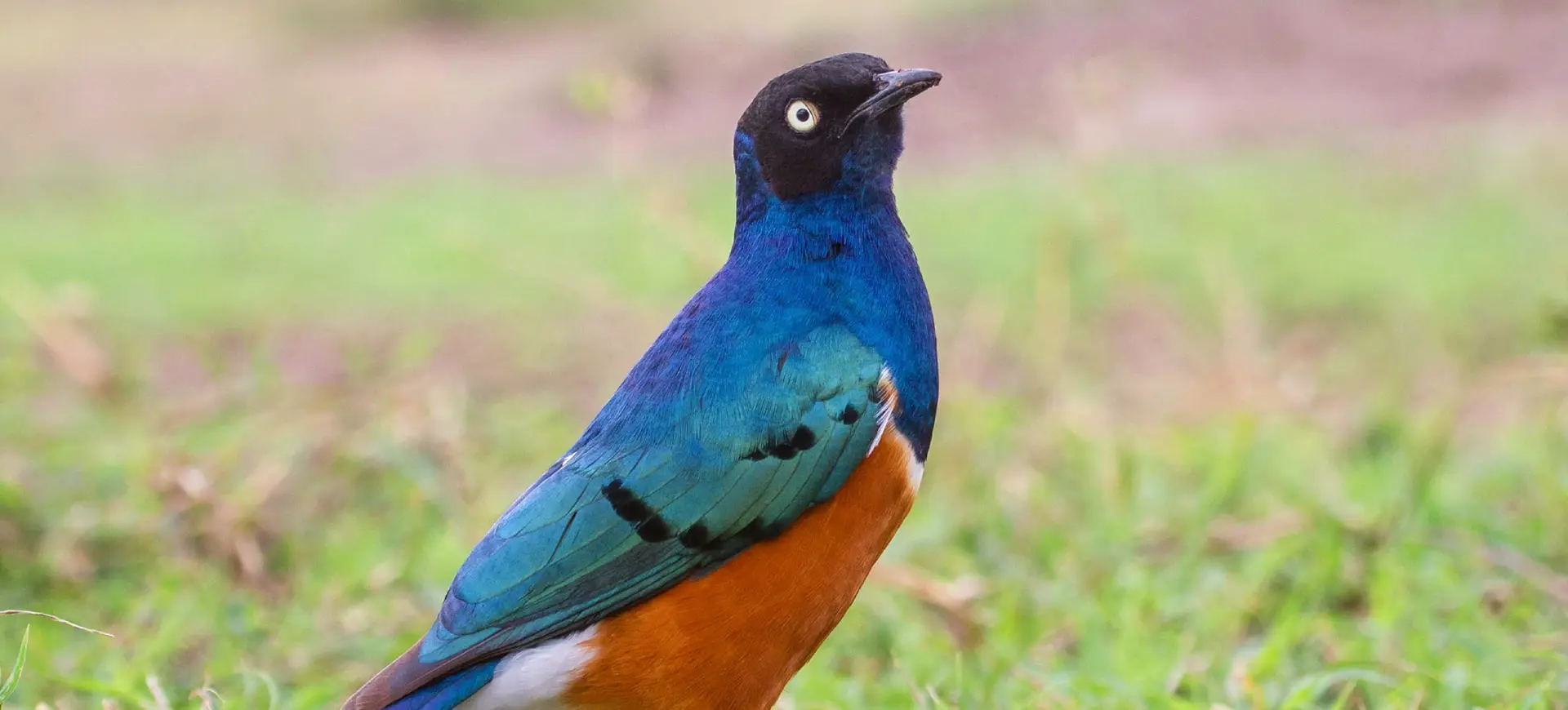Overview
The Bali Myna (Leucopsar rothschildi), also known as the Bali Starling or Rothschild’s Mynah, is a critically endangered bird species native to Bali, Indonesia. Distinguished by its striking white plumage, deep blue around the eyes, and a long, drooping crest of feathers, the Bali Myna is one of the most beautiful members of the starling family. This species is found in small groups and is known for its loud, varied calls and songs, including whistles, trills, and squawks. Bali Mynas are predominantly frugivorous, feeding on fruits, seeds, and insects, and play a crucial role in their ecosystem as seed dispersers.
Due to their limited range, restricted to a few areas of Bali, and the illegal pet trade, Bali Mynas face a critical threat of extinction in the wild. Conservation efforts, including breeding programs and strict legal protections, are underway to help save this iconic species from disappearing. Bali Mynas are monogamous, with pairs forming strong bonds and often remaining together for life. The bird’s striking appearance and rarity have made it a symbol of Bali and conservation efforts worldwide.
The Bali Myna’s diet is composed primarily of fruit, but they also consume insects and small invertebrates. This dietary flexibility allows them to thrive in various habitats, including the forest edges, grasslands, and cultivated areas where they can find food. They are known to forage in the canopy, where their white plumage contrasts sharply with the green foliage. Protecting the Bali Myna’s natural habitats and ensuring the availability of their food sources are vital for the conservation of this species.
Taxonomy
Kingdom
Phylum
Class
Order
Family
Genus
Species
Type
Current distribution:
The Bali Myna is one of the world's most critically endangered bird species, with an extremely limited wild population confined to the Bali Barat National Park and a few small islands nearby. Despite conservation efforts, the wild population remains severely threatened due to habitat loss, poaching, and the illegal bird trade. Reintroduction programs and strict legal protections aim to increase the number of Bali Mynas in their natural habitat. Continuous monitoring, habitat management, and community involvement are crucial for the success of these conservation efforts.
The species has been the focus of international conservation programs, including captive breeding and release initiatives. The Bali Myna's status as a critically endangered species requires urgent and ongoing conservation action to prevent extinction. Protected areas and habitat restoration projects offer hope for expanding the Bali Myna's distribution in the wild. Through concerted global and local efforts, there is potential for stabilizing and increasing the wild population of the Bali Myna.
Physical Description:
The Bali Myna is renowned for its captivating white plumage, which covers most of its body except for the tips of its tail and wings, which are tipped with black. A distinctive feature is the long, drooping crest on its head, which adds to its exotic appearance. The area around the eyes is a striking blue, contrasting with its yellow bill, making it one of the most visually striking birds. Adult Bali Mynas can reach a length of approximately 25 cm (9.8 inches), making them a medium-sized bird within the starling family.
Their legs and feet are grey, which may not be as noticeable against their bright plumage. The males and females are similar in appearance, making it challenging to distinguish between the sexes based on plumage alone. Juvenile Bali Mynas have a duller coloration than adults, developing the full, vibrant white plumage as they mature. The distinctive appearance of the Bali Myna not only makes it a subject of admiration but, unfortunately, a target for poachers in the illegal pet trade.

Lifespan: Wild: ~10 Years || Captivity: ~15 Years

Weight: Male: 3.1-3.5 oz (90-100 g) || Female: 2.8-3.3 oz (80-95 g)

Length: Male & Female: 9 -10 in (23-25 cm)

Height: Male: 9.4-9.8 in (24-25 cm) || Female: 8.6–9.4 in (22–24 cm)

Wingspan: Male & Female: 20-22 in (52-56 cm)

Top Speed: 25 mph (40 km/h)
Characteristic:
Native Habitat:
The Bali Myna is endemic to the island of Bali, Indonesia, where it inhabits the forested regions, particularly in the Bali Barat National Park. Their natural habitats include tropical dry forests, savannas, and the edges of cultivated and settled areas. These habitats provide the necessary resources for feeding, nesting, and breeding. Due to human activities, such as deforestation and agricultural expansion, the Bali Myna’s habitat has been significantly reduced and fragmented.
Conservation initiatives are focused on protecting and restoring these critical habitats to ensure the survival of the Bali Myna. Efforts include reforestation projects, establishing protected areas, and enforcing laws against habitat destruction. The Bali Myna’s dependence on specific forest habitats highlights the importance of comprehensive conservation strategies. Hope exists through habitat protection and restoration for recovering and preserving Bali Myna’s natural environments.
Climate Zones:
Biomes:
Biogeographical Realms:
Continents:
Countries:
Diet:
Diet & Feeding Habits:
Bali Mynas are omnivorous, with a diet that includes fruits, seeds, insects, and small invertebrates. This varied diet allows them to adapt to different environmental conditions and available food sources. They play an important role in their ecosystem as seed dispersers, contributing to the regeneration and health of their forest habitats. During the breeding season, insects become a crucial part of their diet, providing the necessary protein for the growth of their chicks.
Their foraging behavior often leads them to explore different habitats, from forest canopies to open grasslands, in search of food. Bali Mynas also visit plantations and cultivated areas, feeding on various fruits and insects. Conservation efforts to protect and restore Bali Myna’s natural habitats include ensuring the availability of their natural food sources. Sustainable agricultural practices and habitat conservation are key to supporting the dietary needs and ecological role of the Bali Myna.
Mating Behavior:
Mating Description:
Bali Mynas form monogamous pairs, exhibiting strong pair bonds and engaging in mutual grooming and feeding behaviors. They nest in tree cavities, where the female lays and incubates 2-3 eggs, with both parents sharing in the feeding and care of the chicks. The nesting sites are crucial for the reproductive success of the Bali Myna, making the conservation of mature trees and forests essential. The breeding season is closely tied to the availability of food, ensuring that there are ample resources for the growing family.
The success of breeding programs in captivity has been a key component of conservation efforts for the Bali Myna. These programs aim to increase the population and understand the breeding habits and requirements of the species. Protecting the breeding habitats of the Bali Myna in the wild is crucial for their survival and recovery. Through habitat conservation and protection, along with successful breeding programs, there is hope for the future of the Bali Myna.
Reproduction Season:
Birth Type:
Pregnancy Duration:
Female Name:
Male Name:
Baby Name:
Social Structure Description:
Bali Mynas are social birds, often seen in pairs or small family groups, especially during breeding. They communicate with various calls, which maintain social bonds, establish territory, and alert to potential threats. Social interactions, including mutual grooming and shared feeding, play a significant role in the pair bonding and cooperative breeding behavior of Bali Mynas. The social structure of the Bali Myna emphasizes the importance of group cohesion and cooperation for survival.
Understanding the social behavior of the Bali Myna is crucial for successful reintroduction programs and ensuring captive populations’ well-being. Conservation efforts that protect the natural social structures of the Bali Myna are essential for their recovery and survival in the wild. Studying Bali Myna’s social dynamics provides valuable insights into their ecological needs and behaviors. Protecting and restoring the environments that support the social life of Bali Mynas is a key component of their conservation.
Groups:
Conservation Status:
Population Trend:
The wild population of the Bali Myna is critically endangered, with only a small number of birds surviving in their natural habitat. Captive breeding programs have successfully raised the numbers of Bali Mynas, with ongoing efforts to reintroduce these birds into protected areas of their native habitat. The primary threats to their survival in the wild include habitat loss, poaching for the illegal pet trade, and predation. Conservation efforts focus on habitat protection, law enforcement to combat poaching, and community engagement to raise awareness and support for the Bali Myna.
Establishing protected areas and habitat restoration projects are crucial for the survival of the Bali Myna—international cooperation and funding support conservation initiatives, including captive breeding and reintroduction programs. The Bali Myna’s status as a symbol of conservation efforts highlights the importance of preserving biodiversity and natural habitats. Through continued conservation action, there is hope for improving the status of the Bali Myna in the wild.
Population Threats:
The Bali Myna faces numerous threats that have led to its critically endangered status, including habitat destruction due to deforestation and agricultural expansion. Illegal poaching for the pet trade has significantly reduced their numbers in the wild, making legal protection and enforcement vital. The introduction of predators and competition for nesting sites with other species also challenge their survival. Climate change impacts on their habitat could further threaten the Bali Myna by altering food availability and suitable nesting areas.
Conservation strategies aim to address these threats through habitat conservation, anti-poaching efforts, and implementing laws protecting the Bali Myna. Raising public awareness about the plight of the Bali Myna and the importance of conservation is crucial for generating support. Efforts to rehabilitate and release confiscated or injured birds back into protected areas contribute to the recovery of the species. Protecting the Bali Myna requires a comprehensive approach that includes legal protection, habitat restoration, and community involvement.
Conservation Efforts:
Conservation initiatives for the Bali Myna include captive breeding programs, habitat restoration, and the establishment of protected areas within their natural habitat. Successful captive breeding and reintroduction programs have been key to increasing Bali Mynas’s population in the wild. Collaboration between international conservation organizations, the Indonesian government, and local communities has been crucial in implementing these conservation strategies. Education programs aimed at local communities promote the protection of the Bali Myna and its habitat, fostering a conservation ethic.
Creating bird sanctuaries and enforcing strict regulations against poaching and the bird trade are essential for the Bali Myna’s survival. Ongoing research into Bali Myna’s habitat requirements, breeding habits, and threats informs conservation strategies and actions. The global conservation community’s commitment to saving the Bali Myna from extinction demonstrates the importance of international cooperation in biodiversity conservation. Through dedicated conservation efforts, there is hope for securing a sustainable future for Bali Myna.
Additional Resources:
Fun Facts
- The Bali Myna is the only species in its genus, making it unique among the starlings.
- It is the national bird of Bali and a symbol of Indonesia’s wildlife conservation efforts.
- Bali Mynas can mimic sounds from their environment, including human-made noises.
- Lord Rothschild first described the species in 1912, hence its scientific name, Leucopsar rothschildi.
- Captive Bali Mynas often engage in playful behaviors, demonstrating their intelligence and social nature.
- Due to their beauty, Bali Mynas are highly valued in the illegal pet trade, contributing to their critical endangerment.
- Reintroduction programs have included innovative strategies, such as using guardian dogs to protect Bali Mynas from predators.
- The white plumage of the Bali Myna is thought to play a role in intra-species recognition and mate selection.
- Bali Mynas have a distinctive crest of feathers that can be raised or lowered, depending on their mood or social context.
- Conservation efforts for the Bali Myna have become a model for avian conservation programs worldwide, highlighting the importance of international cooperation in saving endangered species.


